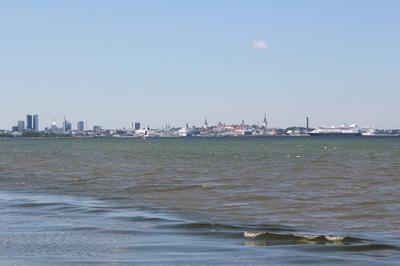The lower old town was built by the merchants. In the 1400s (after 1 fire too many) they banned wooden houses because of the fire risk so lots of older places remain. The upper town was for the church, both Protestant (originally RC) and Orthodox, and the aristocracy. They persisted with wooden places so only two places remain dated before the 1600s. They finally got the idea. The streets in both are cobblestones and the walls remain around more than half of it. The moat was filled in and the the old town is now surrounded by parklands.
|
Tallinn is a mere 50km across the gulf from Helsinki in Finland. Almost uniquely it has never been razed or pillaged and most of the old town survived the Russian bombing in WW2. The old town is a wonderful mix of winding narrow cobblestone streets with stone buildings. Very little traffic, just lots of pedestrians. We decided to pay for a guided walk and our guide Pascha was an Estonian Russian who's parents came to Estonia during the Soviet era. One third of the population still identifies as Russian. The lower old town was built by the merchants. In the 1400s (after 1 fire too many) they banned wooden houses because of the fire risk so lots of older places remain. The upper town was for the church, both Protestant (originally RC) and Orthodox, and the aristocracy. They persisted with wooden places so only two places remain dated before the 1600s. They finally got the idea. The streets in both are cobblestones and the walls remain around more than half of it. The moat was filled in and the the old town is now surrounded by parklands. We camped at the marina around the harbour from the city centre. Tallinn was the site of the sailing during the Moscow Olympics (1980?) and the area is now a marina. During summer part of the carpark is used for motorhome camping - the facilities are very basic.
0 Comments
|
Archives
September 2014
Categories
All
|


